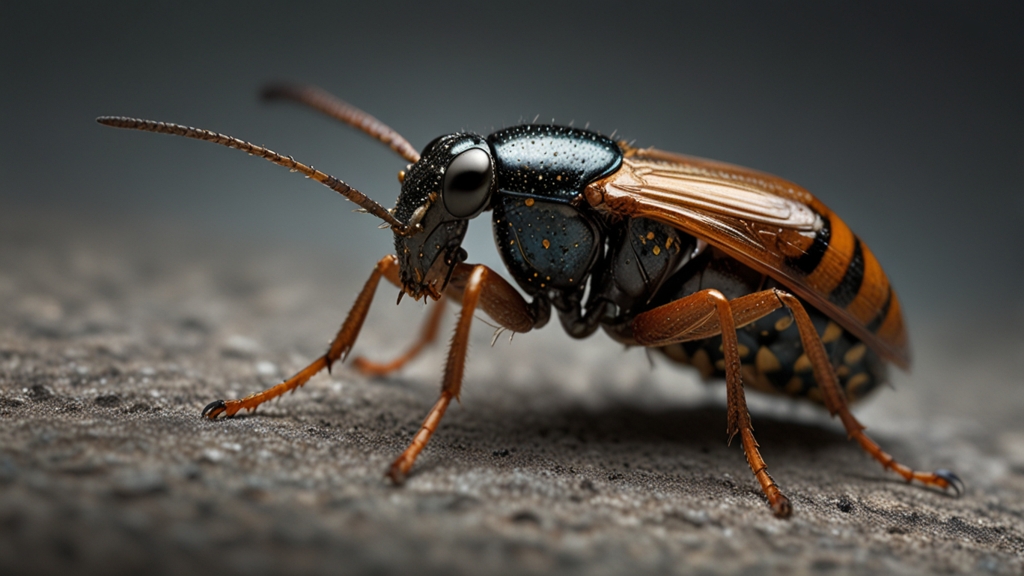The Secret Language of Insects: How They Communicate Among Themselves
In the bustling microcosms of our world, insects create intricate symphonies of communication, relying on an array of methods to convey their messages. These tiny creatures speak a language that, though silent to human ears, is profoundly rich and complex. Understanding this hidden dialogue can offer us insights into the intricacies of nature and the fundamental mechanisms of ecological systems.
Olfactory Signals: The Power of Scent
One of the most prevalent ways insects communicate is through olfactory signals. Pheromones, chemical substances released into the environment, serve various purposes, from marking territory to attracting mates. Ants, for instance, leave pheromone trails to guide their nestmates to food sources. Remarkably, these trails can be reinforced or diminished depending on the frequency of use, ensuring an efficient foraging system.
"The use of pheromones by insects is a masterclass in chemical communication. It showcases their ability to navigate and interact with their environment in ways that humans are only beginning to understand." – Dr. Emily Carver, Entomologist.
Furthermore, many insects use these subtle chemical cues for defensive purposes. For example, when a honeybee stings, it releases an alarm pheromone that signals other bees to become more aggressive, thereby intensifying the colony's defense mechanism.
Acoustic Communication: The Insect Symphony
Sound is another powerful tool in the insect communication arsenal. From the rhythmic chirping of crickets to the high-pitched buzz of cicadas, acoustic signals play a crucial role in mate attraction, territory establishment, and predator avoidance. Male crickets produce their characteristic chirping sounds by rubbing their wings together, a process called stridulation. Each species has a unique song, allowing females to identify potential mates of the same species.
"Acoustic communication in insects is not just about producing noise; it’s a complex system involving specific frequencies, rhythms, and patterns that convey different messages and emotions." – Prof. Andrew Nguyen, Behavioral Ecologist.
Additionally, some insects, like certain species of moths, have evolved ultrasonic hearing to detect the echolocation calls of bats, their natural predators. By interpreting these acoustic signals, moths can take evasive action to avoid being caught.
Visual Signals: The Colors of Communication
While many insects rely on olfactory and acoustic signals, visual communication also plays a significant role. This method is most often employed by insects with exceptional eyesight, such as bees and butterflies. The bright coloration of flowers has evolved to attract these pollinators, who, in turn, use their brilliant patterns to signal readiness for mating or to ward off predators.
Fireflies, for example, utilize bioluminescence to attract mates. Each species of fireflies has a unique light pattern that helps individuals identify and select appropriate partners. This form of communication is not only fascinating but also vital for survival and reproduction.
Tactile Communication: The Language of Touch
Touch is a fundamental means of communication, especially in insects that live in close-knit communities, like ants and bees. Ants use their antennae to contact and tap each other, exchanging information about food sources, colony conditions, or threats. Similarly, honeybees perform the famous "waggle dance" on the hive floor to indicate the direction and distance of nectar sources to their fellow foragers.
This form of tactile communication is remarkably effective, ensuring cooperative behavior and efficient resource utilization within the colony. It highlights the sophisticated social structures and the cooperative nature of many insect species.
Conclusion
From the silent whispers of pheromones to the vibrant displays of bioluminescence, the secret language of insects is a testament to the incredible diversity and adaptability of these small creatures. Their communication methods are not only fascinating in their complexity but also essential to their survival and success in varied environments. By studying these intricate systems, scientists can continue to uncover the mysteries of the natural world and perhaps even apply these lessons to improve our own communication technologies.











